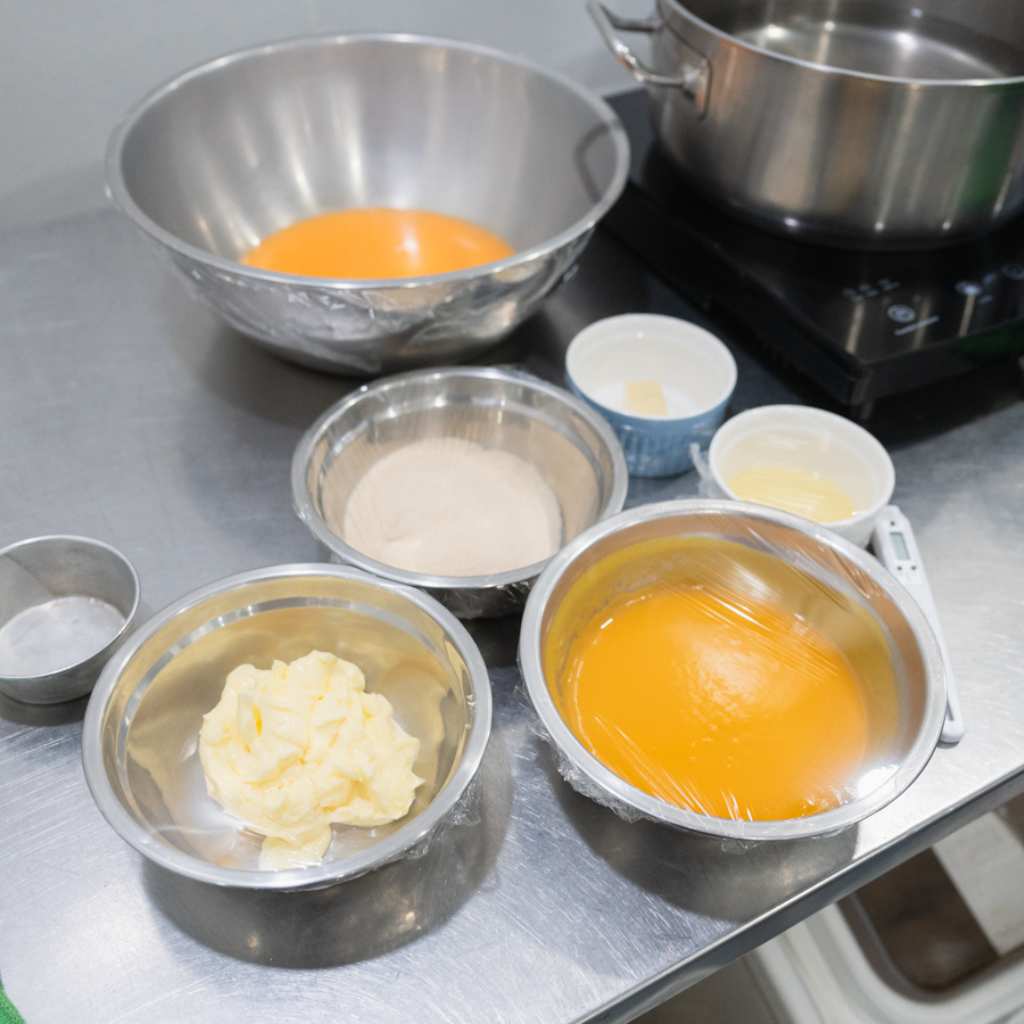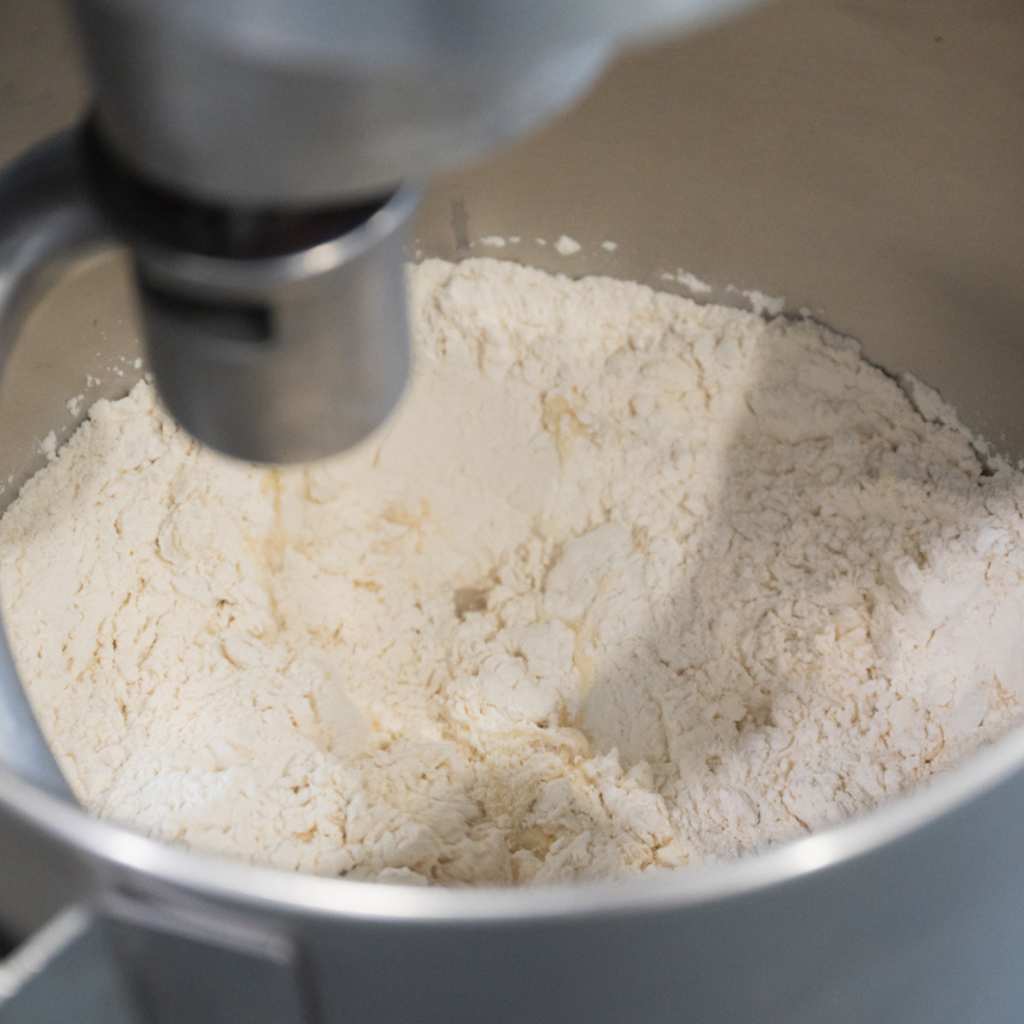How to Make: Bomboloni — from one of the best bakeries in Singapore

How to Make is a HungryGoWhere series spotlighting popular foods in Singapore and the work that goes into making them.
Ask us what our favourite pastries are and bomboloni immediately springs to mind — they’re fluffy, oh-so-decadent, cream-filled Italian donuts that are bite-sized and easy to munch on.
After all, who can resist the sweet temptation of sugar-coated pillows that are chock-full of velvety filling?
If you didn’t know, the bombolone gets its name from the Italian word “bomba”, which translates to “bomb” in English. It refers to the treat’s round, orb-like shape, which somewhat resembles an old-fashioned grenade.
But don’t confuse it with the typical American-style donut — while both share similar recipes, the bombolone is an artisanal product that requires more time and effort to perfect.
The leavening process for bomboloni is much more laborious: It takes about two days to make a good batch of bomboloni, while regular donuts can be prepared in a couple of hours. The result is also an airier, fluffier bake.

American donuts are also usually made with cut-out dough, deep-fried and glazed with sugar. By contrast, bomboloni are formed from mounds of tiny round balls, lightly rolled in sugar and piped to the brim with indulgent pastry cream.
If you’ve ever wondered how bomboloni is made, we’ve got you covered.
Founder and executive chef of All Things Delicious, Dewi Imelda Wadhwa (or Mel), has laid out a step-by-step process on how to get started.
How All Things Delicious came to be
Armed with a passion for baking, Mel single-handedly launched All Things Delicious through a website in 2013, using the platform to showcase her bakes and try her hand at new recipes.
Six months later, Mel was invited by an acquaintance to co-share a space in a shophouse unit at Jalan Sultan. It was then that All Things Delicious had its first brick-and-mortar space and began to operate as a takeaway shop.
But as luck would have it, the co-tenant backed out of the lease just a year later, and Mel ended up with the whole store to herself.
She recalled: “It was either make it or break it, (so) we turned All Things Delicious into a dining place with a light menu of food and drinks.”

Its soaring popularity eventually culminated in All Things Delicious moving to its latest location along the bustling Arab Street in 2016.
The bigger space also inspired Mel to introduce a retail-slash-restaurant concept, where she could serve savoury brunch items alongside sweet treats and showcase a larger variety of baked goods — bomboloni included.
The brand has since expanded from a one-woman show to a team of over 50 employees.
Today, All Things Delicious is one of the most popular bakeries in Singapore. It has even served former Singapore president Halimah Yacob, football star Cristiano Ronaldo and Hollywood actress Lucy Liu.

Bomboloni weren’t always on All Things Delicious’ menu — it was first introduced during the peak of the Covid-19 pandemic in 2020, right when everyone was isolated at home and craving comfort food.
Says Mel: “People were going nuts about desserts, so we decided to introduce bomboloni to the menu and it just took off from there.”
On what makes its bomboloni different, she adds: “It’s the fillings, which are inspired by comfort flavours, that make the bakes unique.”
At All Things Delicious, you’ll find flavours such as kaya pandan butter, fruity mixed berry jam and the newly added mango curd (previously a seasonal flavour).
But before you make a beeline for them, do note that All Things Delicious’ bomboloni are only available in-store on weekends. Although, if the craving hits on a weekday, you can always pre-order and self-collect them then.
Making bomboloni isn’t super complex — all you need are a couple of basic ingredients and a whole lot of patience. Here, she shows us how to make her zesty mango curd bomboloni.
How to make bomboloni
Step 1: Prepare the mango curd filling

First, we start with the mango curd filling — this has to be prepared and chilled overnight for a thicker, creamier consistency.
These are the ingredients for the mango curd:
- Mango puree
- Egg yolks
- Sugar
- Lemon juice
- Butter
- Gelatin

Start by boiling the mango puree on a hot stove. Add sugar to the puree, then give it a good mix until the sugar has fully dissolved — all while keeping the heat on.
Then, pour the mango-sugar mixture into a separate bowl with tempered egg yolks, and continue to whip the puree for a smooth (like butter!) and velvety texture.

When all is mixed well and thoroughly, add lemon juice into the mixture for additional zest.
The mango puree is then double-boiled on a stove and cooked to 80°C.
Continue to stir and whip the mixture every five minutes to prevent the curd from coagulating and burning during the process.

Continue to stir the mixture until it starts to thicken. Remember to check the temperature periodically to ensure that it reaches 80°C.
Once so, add gelatin to further emulsify and thicken the curd, which helps to blend and hold the puree together. This also prevents it from being too thin and watery.
Now, let the curd sit and cool until it has reached 50°C. Throw in cold butter and give it a good stir until it has reached a luscious, creamy consistency.
Pour the mango curd into a large piping bag and store the piping bag in the chiller overnight — this keeps the cream cold and thickens its consistency for that oh-so-delicious, silky mouthfeel that we enjoy in a bombolone.
Step 2: Prepare and mix ingredients for the dough

When it comes to making the dough, it’s best to ensure that the ingredients are fresh and prepared on the day itself.
Mel recommends doing this a day after working on the mango curd, so that the filling has a day’s worth of downtime to rest and cool in the chiller for a thicker, creamier consistency.
These are the ingredients for the bomboloni dough:
- Sugar
- Yeast
- Flour
- Water
- Butter
- Egg

Combine all the different ingredients (except the butter, which will be added later) in the mixer for three minutes.
After three minutes, add butter to the mixture, and let the dough mix for another 10 minutes.
The addition of butter is to keep the dough from breaking apart during the kneading and proofing process; after 10 minutes, it should have achieved a gluten-like elasticity.
Step 3: Roll the dough into little round balls

Here is where the kneading and rolling begins: Use a large table for your work surface so you can lay the dough flat and roll it into long, chubby strips.
Cut the dough into identical round balls — you use a weighing machine to ensure that each ball of dough is of a similar size and weigh about 42g each.

Place the prepared balls of dough on a tray and let them rest for 30 minutes.
For first-time bakers, you might want to start with one batch (roughly a dozen) to get a hang of the process.

After resting the dough, place the dough into the proofer and leave it in for 20 minutes. Check from time to time that the bomboloni are proofing well and starting to rise.
Tip: It’s best to prepare the bomboloni in the afternoon when the weather is hotter — the dough proves quicker, saving you quite a bit of time.
Around the 20-minute mark, the donuts would have completely risen and are now ready for deep-frying.
Step 4: Fry the dough balls

Heat the oil to 165°C, then gently lower the donuts into the pan.
The bomboloni will take about five minutes to cook — a tell-tale sign is when the bomboloni start to turn a golden-brown shade.

Remember to regularly toss and flip the donuts on both sides so that they’re evenly fried with a golden-brown hue.
Step 5: Roll the donuts in cinnamon sugar

Once nicely fried, remove the bomboloni from the oil and roll them in cinnamon sugar.
While one thin coat of cinnamon sugar is good enough, you can coat it with more sugar if you like it sweeter.
Step 6: Pipe the bomboloni with mango-curd filling

After it is dusted with sugar, leave the bomboloni out to cool for 20 minutes.
Then, gently poke a hole at the tip of the bomboloni and stuff them with the pre-prepared mango-curd (from Step 1).
Step 7: Adorn the bomboloni with shredded coconut flakes

One final touch of shredded coconut flakes and the bomboloni are good to go.
Be as liberal as you like — the flakes add an additional layer of sweetness to this decadent treat and tie the entire dessert together.
If we were you, we’d then take a step back and admire these gorgeous creations for a bit before digging right into them.
For the latest eats, check out hidden cafe gem Finally Coffee and new coffee shop SG Kopitiam at Bukit Merah. Alternatively, catch up on the latest openings in town.
Do explore the GrabFood Dine-in service for awesome deals.
Book a ride to All Things Delicious at Bugis if reading this feature made you crave bomboloni!
All Things Delicious
34 Arab Street, 01-01
Nearest MRT station: Bugis
Open: Monday to Sunday (8am to 7pm)
34 Arab Street, 01-01
Nearest MRT station: Bugis
Open: Monday to Sunday (8am to 7pm)







